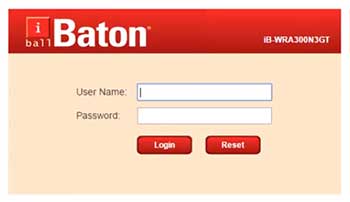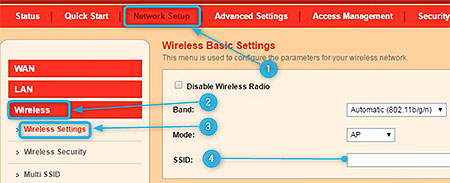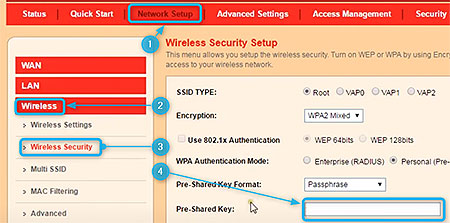If you want to change some of the settings on your iBall Baton router you need to know the iBall Baton login details first. After that you can login to your iBall Baton router easily. This article will tell you more about the default iBall Baton login details and the steps required to access the router settings.
So, let’s start!
CONTENTS
Before you login to the iBall Baton router
Two things have to be prepared for a successful iBall Baton login.
First, you need a device like a smartphone or a laptop that is already connected to the network. If the device isn’t connected you can either use the network cable to connect it to the network, or connect to WiFi if you have the wireless password. No matter which way you choose to connect to the network, without being connected the login process won’t succeed.
Secondly, you need the default or custom iBall Baton login details i.e. the router IP address, username and password. The default iBall Baton login details are given in the next section. However, if you have changed these before, you will need to login with the custom login details.
What are the default iBall Baton login details?
Most iBall Baton routers use 192.168.1.1 as their default IP address.
The default iBall Baton username is admin.
The default iBall Baton password is admin.
How to login to iBall baton router?
Now when you have these two things ready the rest of the login process is pretty simple.
STEP 1 – Launch a browser on the device
The iBall Baton settings can be accessed using a web browser. So, launch any of the browsers you have on your device.
STEP 2 – Type 192.168.1.1 in the address bar
Now, type the default iBall Baton login IP address in the browser’s address bar. Press the enter button on the keyboard after that and a new window should open.
STEP 3 – Enter the username and password

If the IP address is correct, you will be asked to enter a username and a password in the new window. Here you can type admin in both the username and the password fields.
STEP 4 – Click OK
After you click the OK button you should see the iBall Baton admin dashboard. All the router settings are now available to be modified according to your needs.
How to Secure your iBall Baton router
Now when you know the iBall Baton login steps, it is recommended to make some changes to increase the security of the router and the home network as well.
How to change the network name on iBall Baton router
After you login to the router following the steps given above the first thing to change would be the network name. Make sure it is something unique.
- In the Admin dashboard click on Network Setup in the top menu.
- Then in the left-hand menu click on Wireless and then select Wireless Settings.
- Now, in the SSID field type your new network name.
- Click the Apply Changes button to save the changes.

How to change the WiFi password on iBall Baton router
- In the Admin dashboard click on Network Setup in the top menu.
- Then in the left-hand menu click on Wireless and then select Wireless Security.
- Now, in the Pre-Shared Key field type your new wireless password.
- Click the Apply Changes button to save the changes.

With just these two changes we can say that your wireless network is pretty much secured. Of course, there are some other things you can do like changing the default router IP address, enabling firewall, MAC filtering, disabling SSID broadcast and so on.
Please note that when you are connected over WiFi and you change these settings, you will be logged off the network when you click the Apply Changes button. All you have to do then is to login back with the new wireless password. You will also have to update the WiFi password on all other devices that have been connected to the network.
Final Words
Now when you know the exact iBall Baton login steps it is time to take some action and secure your network. Some people ignore his step and end up locked out of their network, someone else using their bandwidth, losing their personal files and so on. If you want to avoid this take some time and at least protect your network at the most basic level. It is still better than no protection at all.

Hey, I’m David. I’ve been working as a wireless network engineer and a network administrator for 15 years. During my studies, I also worked as an ISP field technician – that’s when I met Jeremy.
I hold a bachelor’s degree in network engineering and a master’s degree in computer science and engineering. I’m also a Cisco-certified service provider.
In my professional career, I worked for router/modem manufacturers and internet providers. I like to think that I’m good at explaining network-related issues in simple terms. That’s exactly what I’m doing on this website – I’m making simple and easy-to-follow guides on how to install, set up, and troubleshoot your networking hardware. I also review new network equipment – modems, gateways, switches, routers, extenders, mesh systems, cables, etc.
My goal is to help regular users with their everyday network issues, educate them, and make them less scared of their equipment. In my articles, you can find tips on what to look for when buying new networking hardware, and how to adjust your network settings to get the most out of your wi-fi.
Since my work is closely related to computers, servers, and other network equipment, I like to spend most of my spare time outdoors. When I want to blow off some steam, I like to ride my bike. I also love hiking and swimming. When I need to calm down and clear my mind, my go-to activity is fishing.

nice